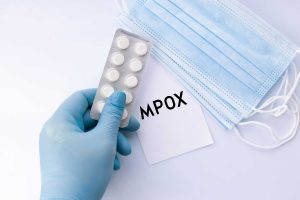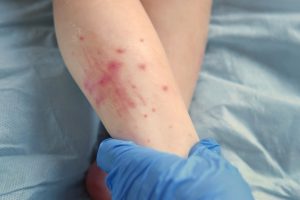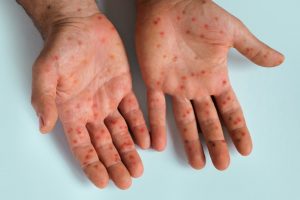Southern Africa is currently experiencing the annual malaria season and as expected there has been an increase in transmission due to the rise in ambient temperature, rainfall and humidity as compared to the same period last year.
With the approach of the holiday season in April, it is important for travellers visiting any of the malaria areas within Southern Africa and elsewhere to take appropriate precautions and maintain a high index of suspicion for symptoms of malaria on their return.
Where is malaria found?
The areas of transmission of malaria in South Africa are the north -eastern parts of Limpopo (along the borders with Mozambique and Zimbabwe), the lowveld areas of Mpumalanga (including the Kruger National Park but excluding Mbombela and immediate surrounds) and the far northern parts of Kwa-Zulu Natal (see map). While the Kruger National Park does fall in the malaria risk area, the transmission risk would be considered low to moderate, depending on the specific camps visited for overnight stays. Personal protection against mosquito bites should be the focus of malaria prevention. The occurrence of an acute febrile/ flu-like illness in the month after return must prompt an urgent malaria blood test and follow up of results. The use of preventative medication can be considered on an individual traveler basis.
In Limpopo, there was an upsurge of cases in Thabazimbi and Lephalale in March 2017 but no new cases have been reported since 22 March 2017. This is an area where historically cases are seen in years with high malaria activity. The Mopani district in Limpopo is an area of known high transmission and has recently experienced an upsurge of malaria cases but the number of cases is now decreasing as the temperatures come down. In Kwa-Zulu Natal, Richards Bay and St Lucia are not considered malaria transmission areas. In Mpumalanga, the towns of White River, Nelspruit and Sabie are not considered malaria transmission areas.
With respect to the neighbouring countries, malaria is present in the following areas:
- Mozambique and Zambia have high malaria transmission throughout the country. Mozambique would be especially considered a high transmission area for malaria at this time of the year. The majority of malaria cases treated in South Africa have a history of travel to Mozambique so preventative measures should include both prevention of mosquito bites and preventative medication.
- Zimbabwe, including the Victoria Falls, is a high transmission area except for Bulawayo, Harare and Gweru and their immediate surrounds.
- Malawi and the area around Lake Malawi are high transmission areas.
- Botswana has transmission in the central and northwest districts including the Chobe National Park and the Okavango Delta but there is no malaria transmission in any of the major cities in Botswana.
- In Namibia, malaria is present in the regions of Kavango (East and West), Kunene, Ohangwena, Omusati, Oshana, Oshikoto, Otjozondjupa, and Zambezi and there is no malaria transmission in Windhoek.
- Malaria control in Swaziland has resulted in a major decrease in local cases and there are very limited foci of malaria transmission in the lowveld area in the east of the country bordering Mozambique
When is malaria season?
Malaria is distinctly seasonal in Southern Africa and predominantly occurs during the rainy months between September and May, with January to April being periods of high transmission.
What precautions should be taken?
The female Anopheles mosquitos that transmit malaria are only active and likely to bite between dusk and dawn and prevention of mosquito bites should be enforced during this period.
Measures to prevent mosquito bites include:
- Wearing long pants and socks
- Applying topical mosquito repellants to exposed skin areas that contain at least 20% DEET
- Burning of coils for repelling mosquitoes
- Sleeping under mosquito nets treated with long-lasting insecticide when in high transmission areas
- Use of air- conditioning and fans where available
- Staying in dwellings with screened windows and doors
Travellers to high transmissions areas listed above should consult with their doctors for a risk assessment and to obtain medication to prevent malaria. Travellers to low transmission areas such as northern Kwa-Zulu-Natal should use mosquito preventative measures and consider malaria prophylaxis if pregnant or immune-compromised. Current recommended chemoprophylactic regimens include mefloquine, doxycycline or atovaquone-proguanil. The consulting doctor will advise on the best option for each individual. It should be noted that whilst these medications are highly effective at preventing malaria, they are not 100% effective.
How will I know if I have malaria?
All travellers should be alert for flu-like symptoms and fever during and up to one month after their visit ends. These symptoms include:
- Sudden onset of fever AND
- Chills and/or sweating
- Headaches
- Nausea and vomiting
- Muscle pain
- Fatigue
Symptoms in children include fever, poor feeding and lethargy.
What should I do if I suspect that I have malaria?
Malaria is an emergency and treatment is required urgently. Anyone presenting with the above symptoms should visit their nearest doctor or health facility immediately for an urgent malaria test. A negative test should be treated with caution and tests should be repeated until positive or until symptoms resolve.
How is malaria treated?
Malaria can be effectively treated especially if it is diagnosed early. The recommended treatment for uncomplicated malaria is Coartem® (artemether/lumefantrine).
NB: Any personpresenting with unexplained fever and progressive illness which may include jaundice (yellow discolouration of eyes) and/or a change in the level of consciousness should be investigated for malaria, even without a history of recent travel as there have been cases of odyssean (or taxi) malaria in South Africa.




